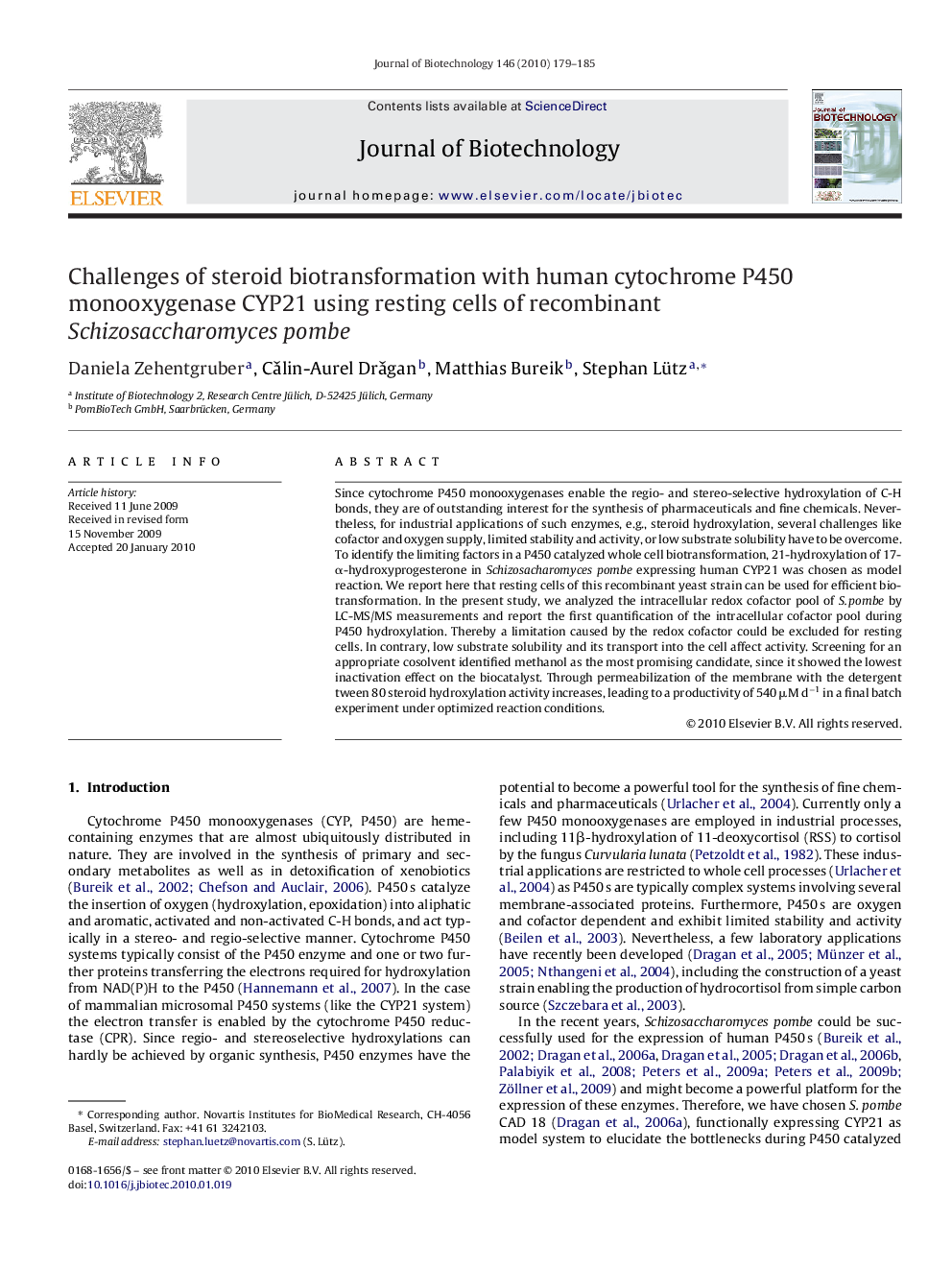| Article ID | Journal | Published Year | Pages | File Type |
|---|---|---|---|---|
| 24387 | Journal of Biotechnology | 2010 | 7 Pages |
Since cytochrome P450 monooxygenases enable the regio- and stereo-selective hydroxylation of C-H bonds, they are of outstanding interest for the synthesis of pharmaceuticals and fine chemicals. Nevertheless, for industrial applications of such enzymes, e.g., steroid hydroxylation, several challenges like cofactor and oxygen supply, limited stability and activity, or low substrate solubility have to be overcome. To identify the limiting factors in a P450 catalyzed whole cell biotransformation, 21-hydroxylation of 17-α-hydroxyprogesterone in Schizosacharomyces pombe expressing human CYP21 was chosen as model reaction. We report here that resting cells of this recombinant yeast strain can be used for efficient biotransformation. In the present study, we analyzed the intracellular redox cofactor pool of S. pombe by LC-MS/MS measurements and report the first quantification of the intracellular cofactor pool during P450 hydroxylation. Thereby a limitation caused by the redox cofactor could be excluded for resting cells. In contrary, low substrate solubility and its transport into the cell affect activity. Screening for an appropriate cosolvent identified methanol as the most promising candidate, since it showed the lowest inactivation effect on the biocatalyst. Through permeabilization of the membrane with the detergent tween 80 steroid hydroxylation activity increases, leading to a productivity of 540 μM d−1 in a final batch experiment under optimized reaction conditions.
